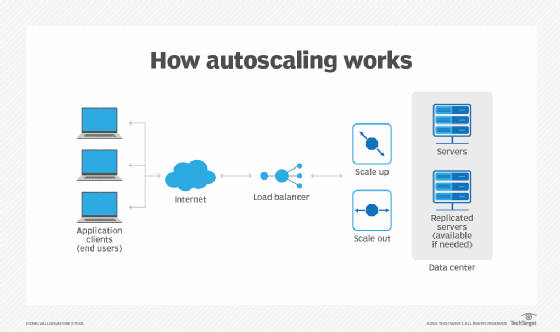AWS Auto Scaling tutorial
Autoscaling is one of the most powerful and underappreciated features in the entire AWS ecosystem.
AWS Auto Scaling enables an EC2 environment to grow and shrink based on the demand an application places on memory and CPU.
Need to ensure high availability while controlling costs? Have your AWS admins start to configure autoscaling groups (ASG) right away. Follow this simple tutorial to get started.
How to implement autoscaling in AWS
In this AWS autoscaling crash course, beginners can follow these steps to learn about EC2 Auto Scaling from scratch:
- Create launch templates.
- Configure ASGs.
- Set scaling policies based on metrics related to high CPU and memory usage.
- Stress-test the EC2 instances.
- Monitor the ASGs and watch AWS scale deployed EC2 instances.
Whether you need to manage an EKS cluster, deploy Docker containers to ECS or manage the lifecycle of a mature Spring Boot application, understanding how autoscaling in AWS works is an essential skill every cloud practitioner must possess.

Cameron McKenzie has been a Java EE software engineer for 20 years. His current specialties include Agile development; DevOps; Spring; and container-based technologies such as Docker, Swarm and Kubernetes.